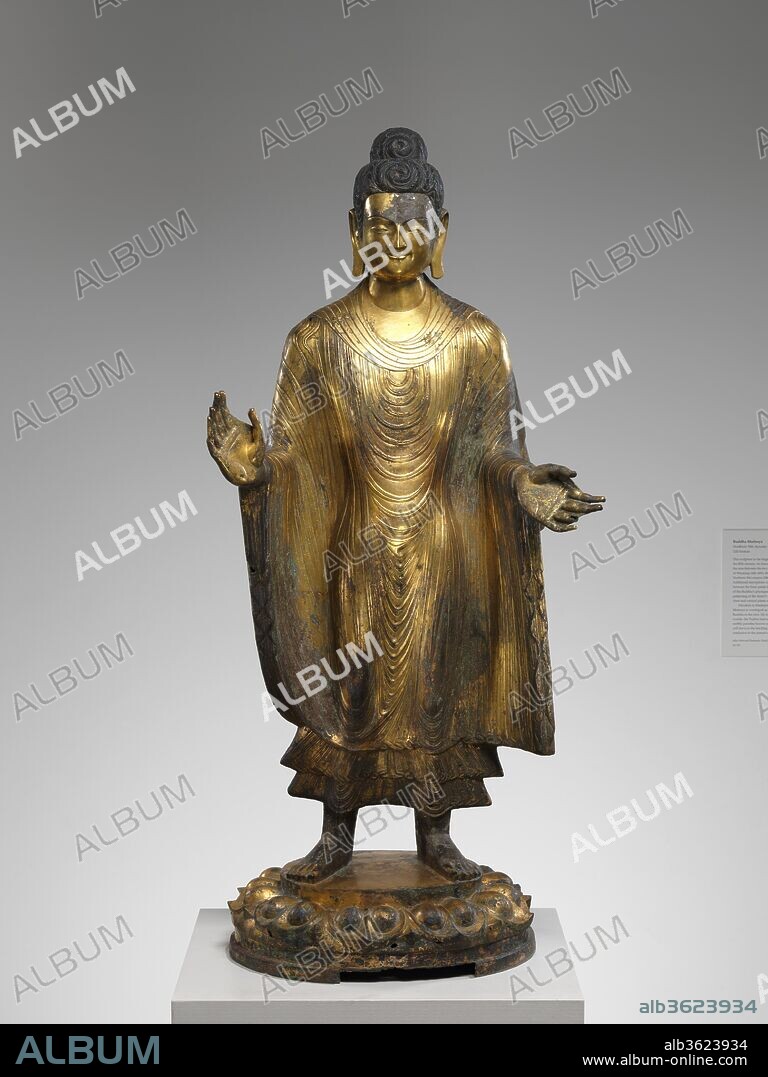alb3623934
Buddha Maitreya (Mile fo)

|
Zu einem anderen Lightbox hinzufügen |
|
Zu einem anderen Lightbox hinzufügen |



Haben Sie bereits ein Konto? Anmelden
Sie haben kein Konto? Registrieren
Dieses Bild kaufen

Titel:
Buddha Maitreya (Mile fo)
Untertitel:
Siehe automatische Übersetzung
Buddha Maitreya (Mile fo). Culture: China. Dimensions: H. 55 1/4 in. (140.3 cm); W. 24 1/2 in. (62.2 cm); D. 19 1/4 in. (48.9 cm). Date: dated 486.
This is the largest early gilt-bronze Chinese sculpture known today. The Buddha's broad shoulders, powerful physique, and long legs derive from fifthcentury Indian prototypes that spread to China along the Silk Road, an example of which can be seen directly behind you in the gallery for Indian art.
Maitreya is worshiped both as a bodhisattva and as a Buddha, for it is believed that once the currentcosmic era has destroyed itself, he will be reborn as the teaching Buddha of the next great era. The identification of this figure as the Buddha Maitreya is based on the dedicatory inscription at the back of the base, which dates the sculpture to 486 and states that it was commissioned in honor of the dowager empress Wenming (442-490), who controlled the Northern Wei dynasty during the last three decades of the fifth century.
Technik/Material:
Gilt bronze with traces of pigment; piece-mold cast
Zeitraum:
Northern Wei dynasty (386-534)
Museum:
Metropolitan Museum of Art, New York, USA
Bildnachweis:
Album / Metropolitan Museum of Art, NY
Freigaben (Releases):
Model: Nein - Eigentum: Nein
Rechtefragen?
Rechtefragen?
Bildgröße:
3151 x 4200 px | 37.9 MB
Druckgröße:
26.7 x 35.6 cm | 10.5 x 14.0 in (300 dpi)
Schlüsselwörter:
 Pinterest
Pinterest Twitter
Twitter Facebook
Facebook Link kopieren
Link kopieren Email
Email
